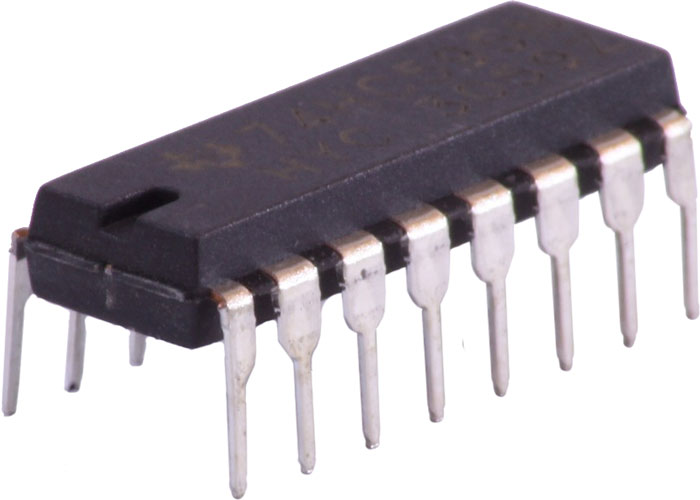 The invention of integrated circuits (IC) reduced the size of electronics. The circuits before its invention were large and occupied huge space. Therefore, earlier computers, hard drives, and all other electronic items were big. ICs brought down their size, weight, and power consumption.
The invention of integrated circuits (IC) reduced the size of electronics. The circuits before its invention were large and occupied huge space. Therefore, earlier computers, hard drives, and all other electronic items were big. ICs brought down their size, weight, and power consumption.
Moreover, this also led to research and development for inventing faster circuits. As a result, ICs were designed with increased capacity and speed. Today, there are thumb-sized ICs with a capacity equal to billions of transistors in one.
What Are Integrated Circuits?
An integrated circuit (IC) is a combination of different electronic components. It is a semiconductor material that contains a circuit design printed on it. Silicon is generally used for making ICs. It is also called a chip because the circuit is printed on a straight piece of silicon.
Types of Integrated Circuits
There are mainly two types of Integrated Circuits; general-purpose and specific purpose.
General-purpose ICs are used to perform all kinds of functions like calculation, data transfer, and similar others. Computer processor contains general-purpose ICs.
Specific purpose ICs are used to perform special functions like temperature maintenance, controlling speed, and many others. Air conditioners, smart television, motor-based machines in factories, and mobile phones contain specific purpose ICs.
How Integrated Circuits Are Made?

An integrated circuit (IC) is made up of silicon material. A plain piece of silicon is called a wafer on which the circuit is printed. The silicon wafer contains metallic pins from its two sides. The process of making ICs is called fabrication.
How Do Integrated Circuits Work?
 ICs are placed on circuit board either by sticking their pins or fixing them in a socket or house. It works by receiving and sending signals on the circuit board from which it is powered up. Each leg or pin of IC has a different job. Functions like sending and receiving data, power to run it, and many others are performed by different pins.
ICs are placed on circuit board either by sticking their pins or fixing them in a socket or house. It works by receiving and sending signals on the circuit board from which it is powered up. Each leg or pin of IC has a different job. Functions like sending and receiving data, power to run it, and many others are performed by different pins.
Computer Processors
 Integrated Circuit technology is used in designing powerful processors. The mainframe computers mainly use them. These processors are built from silicon wafers on which the transistors and connections between them are printed at the nano scale. Therefore, billions of transistors are printed on a single silicon chip or wafer.
Integrated Circuit technology is used in designing powerful processors. The mainframe computers mainly use them. These processors are built from silicon wafers on which the transistors and connections between them are printed at the nano scale. Therefore, billions of transistors are printed on a single silicon chip or wafer.
These processors are used in laptops, smartphones, weather forecasts, data security, satellites and spacecraft, nuclear processing, and military operations.
Applications of Integrated Circuits
It is difficult to think of the modern world without Integrated circuits due to their immense applications. Almost every electronic device uses ICs.
- Nintendo, PlayStation, Xbox, and many other such digital platforms introduced High Definition video games based on power processors.
- Industries and robots use IC to work automatically with high accuracy and precision.
- Drones use IC to send and receive radio signals to fly and transfer information.
- Mobile phones, satellite, radar, radio, internet modems and switches, and various other communication equipment use IC for sharing data, voice, and video.
- Microwave oven and air conditioner use ICs to send and receive signals from temperature sensors to control and maintain it.
- Smart Cars like Tesla use ICs to monitor pilot’s heartbeat, track car direction through GPS, and sense obstacles in their way from long range.
History of Integrated Circuits?
Before the invention of integrated circuits, electronic devices were huge in size, heavy, and consumed a tremendous amount of power. Because their circuits contained a lot of electronic components larger in size.
Radio communication stations contained equipment of the monster’s size. The first hard drive having 2 MB capacity made by IBM weighed in tons. Computers invented by Charles Babbage and Alan Turing covered the whole room.
After World War II, the invention of the transistor made its way for the development of ICs. Mohammad Attala, an Egyptian engineer at Bell Lab in 1958 went a step ahead by discovering the method of printing circuits on the silicon surface. He also invented the metal-oxide-semiconductor transistor.
In the same year, Jack Kilby from Texas Instruments and Robert Noyce from Fairchild Semiconductor invented the first integrated circuit. With its invention, electronics went under major changes. Faster processors began to be designed. IBM, Intel, and Motorola produced high-speed computer processors.





